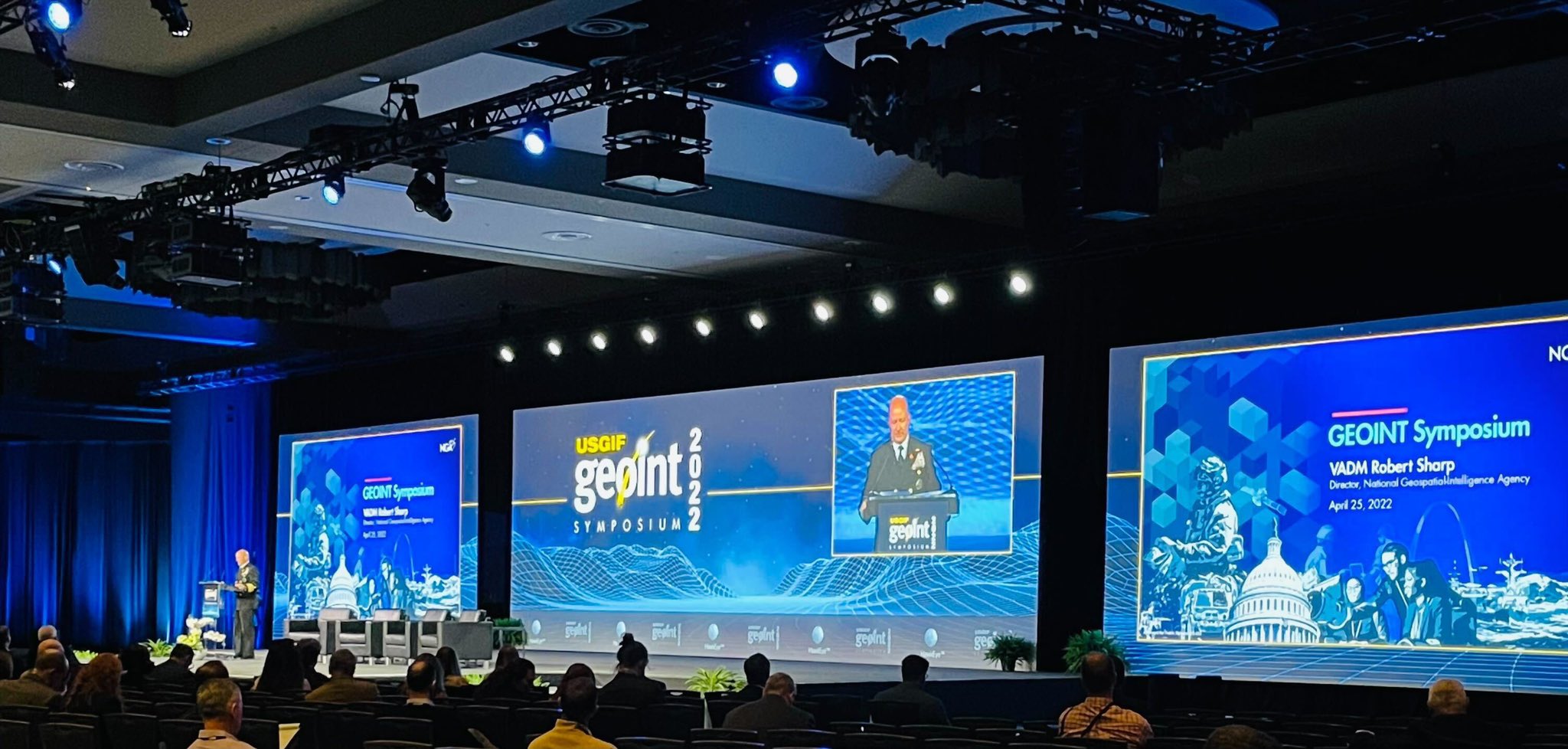Sharp said NGA is not imposing any restrictions on the sharing of commercial satellite imagery by U.S. companies
DENVER – Geospatial intelligence in the form of commercial imagery and analytical services “have been instrumental to those fighting in Ukraine, and to shaping worldviews of the crisis,” said Vice Adm. Robert Sharp, director of the National Geospatial Intelligence Agency.
In a keynote speech April 25 at the GEOINT Symposium in Aurora, Colorado, Sharp praised efforts by U.S. intelligence agencies, allies and commercial satellite operators “to provide context and clarity to complex situations.”
Images collected by commercial spy satellites are “even being used effectively to provide transparency, and counter Russian disinformation,” he said.
Sharp has served as director of NGA since 2019. He is retiring in June and will be replaced by President Biden’s nominee Vice Adm. Frank Whitworth.
Despite an abundance of commercial satellite imagery, the demand continues to outpace supply, he said.
“We’re not at the point that we’re overly saturated,” Sharp said. “Some people think we have persistence from space, that we’re constantly monitoring everything.” But that’s not the case, he said. “We are getting more frequent snapshots, so we’re heading in the right direction.”
He told the audience of geospatial industry professionals: “I think you all have job security.”
“Geospatially based products have been absolutely critical in providing world leaders and military planners a common understanding of what’s going on in Ukraine and its surrounding areas,” he said.
The processes used by NGA to analyze and distribute intelligence are classified, Sharp said.
But he did say that NGA is monitoring Ukraine and the broader region, and disseminating geospatial intelligence to partner nations. NGA also facilitates allies’ access to commercial imagery from U.S. companies. “Is NGA OK with all that, even encouraging it? Absolutely. Heck yeah. No restrictions,” he insisted.
In another project in support of U.S. allies, NGA personnel helped U.S. European Command to train allies to operate a spy drone called the Aerial Reconnaissance Tactical Edge Mapping Imagery System, or Artemis. It’s a small aircraft that’s used when it’s cloudy and atmospheric conditions are unsuitable for satellite collection, which is frequently the case over Ukraine.
Because of this initiative, he said, “we now have military forces in Europe who can use Artemis for high-resolution imagery, creating their own geoint at the tactical edge that can be easily shared at the unclassified level with international partners, and with no restrictions.”
